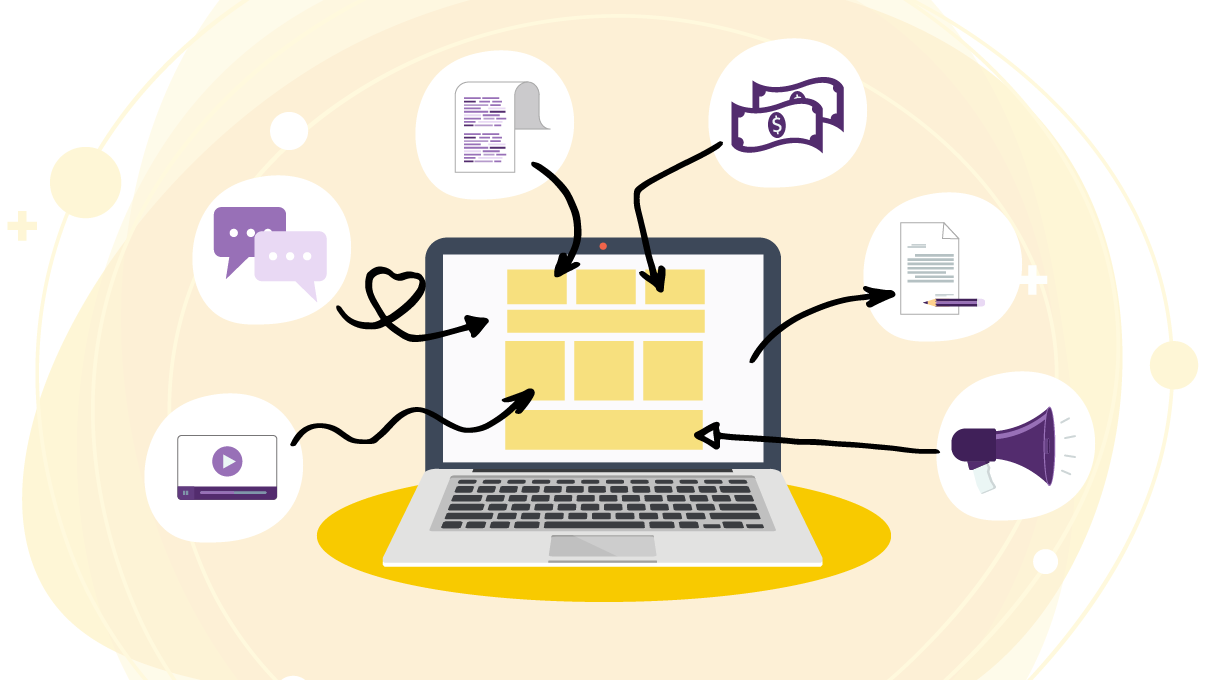In a post published last January, we talked about the importance of inbound marketing and how can it work for a company. Today we’ve decided to dig deeper into the subject: since content represents a key part of any serious marketing plan, it is time to start showing our cards. Why is content so vital? And more importantly: What are the main types of content and what are they good for? Let’s take a look:
- Written Content
- Web content: this is an easy one. The information displayed on your website’s homepage is the first impression, the company at a glance: good web content is both informative and sales oriented. It should be clear, concise and attractive – similar to ad copy, but not too extensive or heavy (otherwise, visitors will feel the urge to bounce away).
- Articles and blog posts: as we’ve covered in previous posts, articles and blogs are the perfect space to display your company’s stories. Set a goal (explain? showcase? inform?) and let loose the writers. Two key points to remember here: first, articles and blog posts are great for organic SEO. Secondly, remember: if you are not in control of your company’s story, someone else will be. Scary, but true.
- Whitepapers and how-to guides: unassuming, yet beautiful little gems of content. Think of this information units as if they are tools: you surely don’t know when you’ll be needing them but trust us, you’ll be thanking the gods for having them around when the situation demands it. Furthermore, solving a customer’s problem will give you access to the rare commodity of gratitude. Remember the old saying? Happy customers are loyal customers.
- Social media content: if blog posts and articles where the backstory lies, social media is where everyday talk happens. Nevermind the company, social media requires awareness and a light touch – without these traits, it’s better not to engage.
- Messages, emails and all things support: here’s when the wheat separates from the chaff. Good companies maintain high standards of personal communication with their audiences.
- Visual content
Harder to break down into pieces, visual content goes beyond what we define as ‘conscious perception’. Typography, element order, color, and functionality – among other things – are intertwined in ways that UX and UI designers understand better than the rest of the mortals. Yet, there are some visual content types that can be identified right away, including:
- Infographics: useful when there’s too much good information to share. Plus, infographics tend to get more eyeballs than a large chunk of text.
- Photos: an often underlooked type of content, photography can be striking and inspiring. Every brand should rely on good photography, no matter what the line of work.
- Video: the newest addition to the internet’s content crown. Costs for video production are going down, and quality is going up, so there aren’t really excuses for not making video.
- Webinars and explainer videos: an enriched version of how-to guides and whitepapers. Useful tools that in video format can (also) make your company look good.
These, in summary, are the main types of content that will get your company going when it comes to marketing. There are other items – games, quizzes, interviews – but this pretty much covers it. The internet is relentless, and users demand more and better content by the minute: producing is nothing but staying ahead of the curve – and we are here to help.

